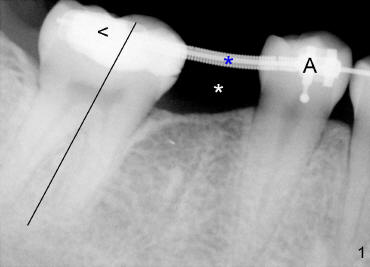
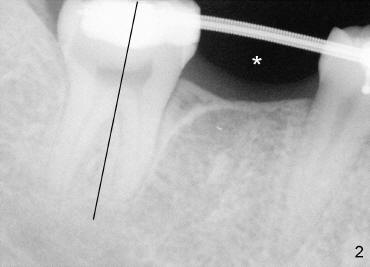
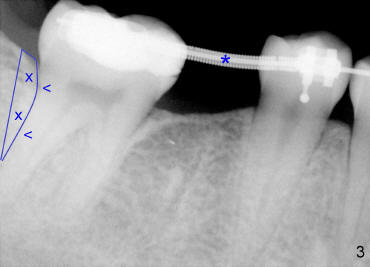
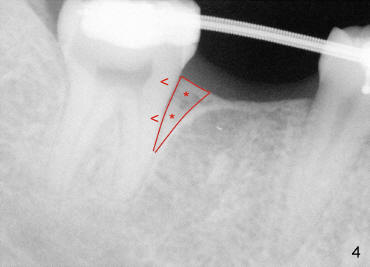
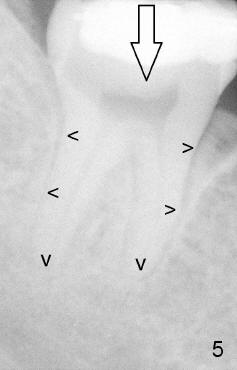
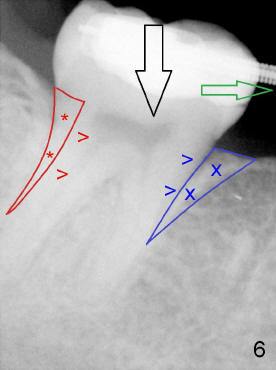
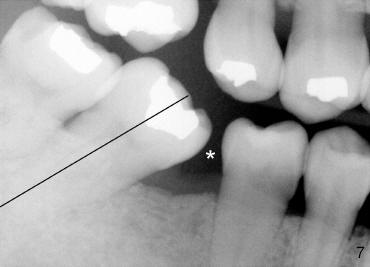
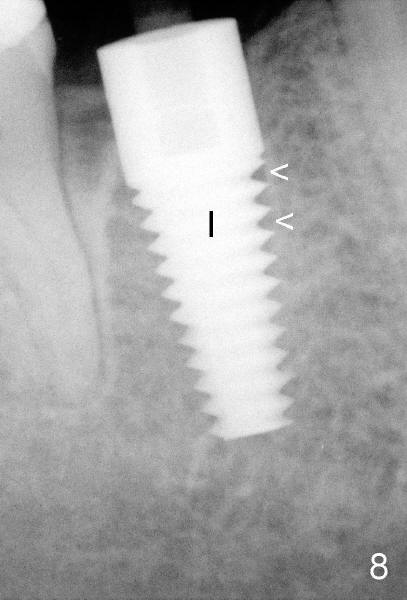
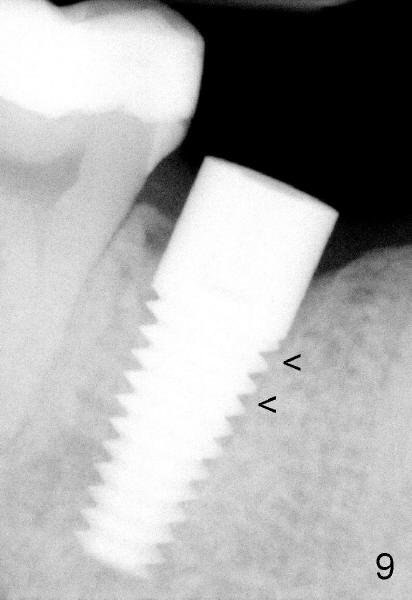
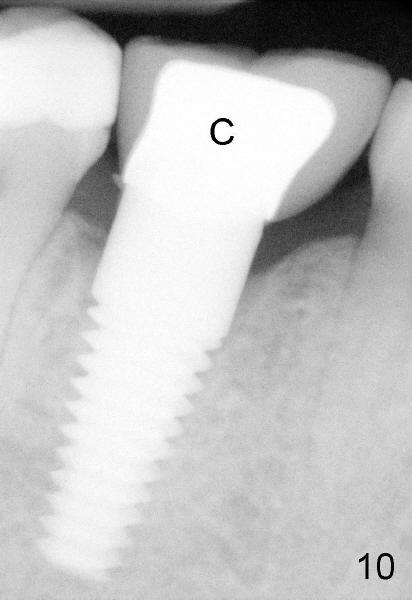
 |
 |
||
 |
 |
||
 |
 |
 |
|
 |
 |
 |
|
Dental Education Lecture: Braces before Implant II/How does tooth move with braces?
Marla loses a molar tooth for a while (Fig.1: white *) and wants the tooth back. But the space is too small for an implant, because the molar in the back leans forward (black line). So she needs braces first. Dr. Tracy Salyer, an orthodontist, places a special device using the teeth in the front as an anchorage (A) and spring (blue *) to push the molar backward (arrowhead).
In five months, the molar returns where it belongs (Fig.2). It is not tilted anymore (black line). There is enough space (*) for implant placement.
How does a tooth move with braces? When a tooth is exerting pressure (Fig.3: blue arrowhead), the bone next to is gradually dissolved (resorbed) (blue area and x) so that the tooth can move there. The white dense bone (Fig.1, corresponding to blue area in Fig.3) is gone in the same area of Fig.2,4 after brace action. On the other side, the tooth is having tension (Fig.4: red arrowheads). It facilitates bone formation (red area and *, as compared to Fig.1,3) so that when the tooth moves backward, there is always bone surrounding it. The tooth stays there pretty stable.
When the tooth and biting force are straight (Fig.5: big arrow), the pressure and tension are even distributed in the roots (black arrowheads). It is normal and good for the tooth. When the tooth is not straight, biting force (Fig.6: black arrow) causes one side of the tooth to press the bone (blue arrowheads) and the other side to pull the bone (red arrowheads). One side of bone is gone (blue), while the other is forming (red). The tooth will continue tilting forward (green arrow), as shown in Fig.7 (from another patient) with narrower space (*, compare to Fig.1,3).
When an implant is placed for Marla, there are small spaces between the implant (Fig.8 I) and bone (arrowheads). Five months later, the spaces appear to be closed (Fig.9 arrowheads). It suggests that the implant is more stable within the bone. Finally a crown is cemented (Fig.10 C). The crown can also keep the surrounding teeth in place. It appears to be the best retainer in this area.
Xin Wei, DDS, PhD, MS 1st edition 03/30/2011, last revision 09/27/2012